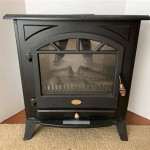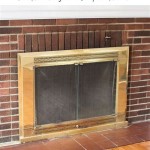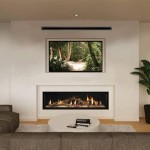The Allure of the 60-Inch Fireplace: Aesthetic Appeal and Functional Benefits
The 60-inch fireplace has emerged as a prominent design element in modern homes, offering a compelling blend of visual impact and supplemental heating capabilities. This size range provides a substantial presence, making it a focal point in living rooms, family rooms, and even bedrooms. Understanding the various types, benefits, and installation considerations associated with a 60-inch fireplace is crucial for homeowners considering this upgrade.
The term "60-inch fireplace" typically refers to the width of the firebox opening or the visible portion of the fireplace insert. This measurement dictates the overall scale of the unit and its surrounding facade. The actual dimensions of the entire fireplace structure, including the frame and any surrounding mantelpiece, will naturally exceed 60 inches.
Several factors contribute to the popularity of the 60-inch fireplace. Firstly, its size allows for a more impressive and realistic flame display, particularly in electric and gas models. Secondly, it provides ample heat output, capable of warming larger spaces efficiently. Thirdly, it serves as a powerful design element, capable of defining the aesthetic of an entire room. Finally, technological advancements have made these fireplaces more energy-efficient and easier to operate.
Types of 60-Inch Fireplaces
The market offers a diverse range of 60-inch fireplaces, each with its own advantages and disadvantages. The primary types include electric, gas, and wood-burning fireplaces.
Electric Fireplaces: Electric fireplaces represent a convenient and versatile option. Operating on standard electrical outlets, they produce heat through electric coils and often feature realistic flame effects achieved through LED technology and simulated embers. A significant advantage of electric fireplaces is their ease of installation, requiring no venting or gas lines. They are also highly controllable, with adjustable heat settings and flame brightness. Many models include features such as timers and remote controls. While they provide supplemental heat, electric fireplaces are generally less powerful than gas or wood-burning options. However, their aesthetic appeal and ease of use make them a popular choice for homeowners seeking a low-maintenance fireplace solution.
Gas Fireplaces: Gas fireplaces offer a more authentic flame experience and greater heat output compared to electric models. They operate on either natural gas or propane and require professional installation to connect to a gas line. Gas fireplaces can be vented or ventless. Vented gas fireplaces require a chimney or venting system to expel combustion byproducts, while ventless models burn cleaner and do not require venting. Ventless gas fireplaces are subject to stricter safety regulations due to concerns about indoor air quality. Gas fireplaces provide a consistent and controllable heat source and are often equipped with features such as thermostatic controls and remote operation. They are a popular choice for homeowners seeking a balance between aesthetics, heat output, and convenience.
Wood-Burning Fireplaces: Wood-burning fireplaces are the traditional fireplace option, offering the authentic experience of burning wood. They require a chimney for proper ventilation and regular maintenance, including cleaning and inspection. Wood-burning fireplaces provide significant heat output and a visually appealing flame. However, they also require a readily available source of firewood and involve more hands-on operation compared to electric or gas models. Wood-burning fireplaces are subject to stricter regulations regarding emissions and air quality. While they offer a classic aesthetic and powerful heating capabilities, they are generally less convenient and require more maintenance than other types of fireplaces.
Benefits of Choosing a 60-Inch Fireplace
Opting for a 60-inch fireplace presents several distinct advantages, ranging from enhanced aesthetic appeal to improved heating efficiency.
Enhanced Aesthetic Appeal: The substantial size of a 60-inch fireplace makes it a prominent focal point in any room. Its large firebox allows for a more dramatic and realistic flame display, creating a visually captivating ambiance. A 60-inch fireplace can be customized with various facade materials, such as stone, brick, tile, or wood, to complement the existing decor. It can also be integrated into custom-built entertainment centers or mantelpieces, further enhancing its aesthetic impact. The larger scale provides more flexibility in design, allowing for greater creativity in incorporating the fireplace into the overall room design.
Improved Heating Efficiency: A 60-inch fireplace is capable of generating a significant amount of heat, making it suitable for warming larger spaces. Gas and wood-burning models are particularly effective at providing supplemental heat, reducing reliance on central heating systems and potentially lowering energy costs. Even electric models, while less powerful, can provide targeted heating to a specific area, improving comfort and energy efficiency. The larger firebox size allows for more efficient combustion, maximizing heat output and minimizing energy waste. This makes a 60-inch fireplace a practical and cost-effective heating solution, particularly during colder months.
Increased Home Value: A well-designed and professionally installed 60-inch fireplace can significantly increase the value of a home. It is considered a desirable feature by many homebuyers, adding both aesthetic appeal and functional benefits. A fireplace can transform a living space into a cozy and inviting environment, enhancing its overall livability and appeal. The perceived value of a fireplace is influenced by factors such as its type, design, and integration with the existing decor. A high-quality 60-inch fireplace, properly maintained and integrated into a cohesive design scheme, can be a significant selling point for a home.
Installation and Safety Considerations
Proper installation is crucial for the safe and efficient operation of a 60-inch fireplace. Depending on the type of fireplace chosen, installation may require professional assistance and adherence to specific building codes and safety regulations.
Electric Fireplace Installation: Electric fireplaces are the easiest to install, typically requiring only a standard electrical outlet. However, it is essential to ensure that the outlet is properly grounded and capable of handling the electrical load of the fireplace. Wall-mounted electric fireplaces require secure mounting to the wall, following the manufacturer's instructions. Recessed electric fireplaces require framing and electrical work to be done before installation. It is always recommended to consult with a qualified electrician to ensure safe and compliant installation.
Gas Fireplace Installation: Gas fireplaces require professional installation to connect to a gas line and ensure proper venting. A qualified gas technician should perform the installation, following all applicable building codes and safety regulations. Vented gas fireplaces require a chimney or venting system to vent combustion byproducts safely. Ventless gas fireplaces require careful consideration of room size and ventilation to prevent the buildup of carbon monoxide. Regular inspection and maintenance of the gas line and venting system are essential for safe operation.
Wood-Burning Fireplace Installation: Wood-burning fireplaces require a chimney for proper ventilation and must comply with local building codes regarding fire safety. The chimney must be properly sized and constructed to ensure adequate draft and prevent the buildup of creosote, a flammable byproduct of wood combustion. Regular chimney cleaning and inspection are essential to prevent chimney fires. Wood-burning fireplaces also require a non-combustible hearth extension to protect the flooring from sparks and embers. Proper ventilation and adherence to safety regulations are crucial for the safe operation of a wood-burning fireplace.
In addition to installation considerations, several safety precautions should be observed when operating any type of fireplace. It is essential to keep flammable materials away from the fireplace and to never leave a fire unattended. Carbon monoxide detectors should be installed in the home to provide early warning of carbon monoxide buildup. Regular inspection and maintenance of the fireplace and venting system are crucial for preventing hazards and ensuring safe operation. Following the manufacturer's instructions and adhering to safety guidelines will minimize the risk of accidents and ensure the enjoyment of the fireplace for years to come.
The choice of facade materials also impacts safety. Materials must be heat-resistant and non-combustible, especially those in close proximity to the firebox opening. Stone, brick, and ceramic tile are common choices due to their heat resistance and durability. Wood mantels and surrounds must be installed with adequate clearance from the firebox to prevent overheating and potential fire hazards. Consult local building codes and regulations for specific requirements regarding fireplace construction and safety.

Clihome 60 In W Black Fan Forced Electric Fireplace The Fireplaces Department At Com

Allure 60 Electric Fireplace

Touchstone Sideline 60 Inch Built In Electric Fireplace Heater 80011 Fireplaces Depot

60 Inch Recessed Wall Mounted Electric Fireplace 750 1500w Remote Oneinmil

Touchstone Sideline Elite 60 In Smart Wall Mount Recessed Electric Fireplace Built Insert 80037 Fireplaces Depot

Linnea Electric Fireplace 60 Halo European Home Authorized Dealer Very Good

Bossin 60 Inch Electric Fireplace Recessed Wall Mounted Inserts Ultra Thin Adjustable Flame Colors Sd With Touch Screen And Remote Control Com

Dimplex Ignitexl Bold Built In 60 Inch Linear Electric F

Advance Panoramic 60 Inch 3 Sided Hd Media Wall Electric Fire Insert

Modern Flames Orion 60 Inch Slim Series Electric Fireplace Or60 North Country Fire
Related Posts








